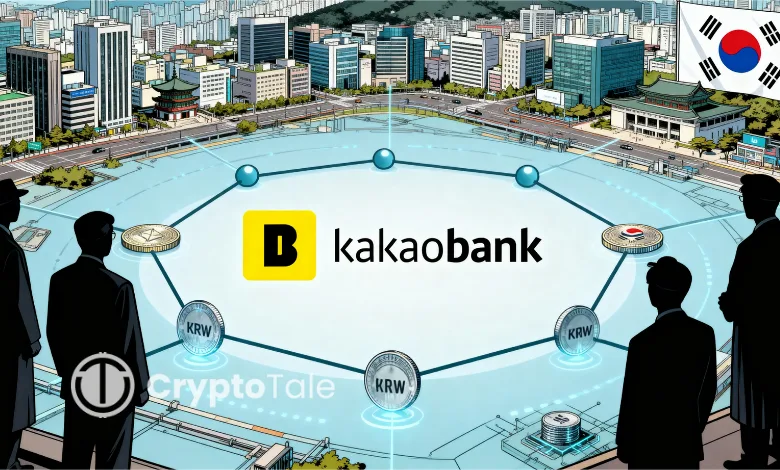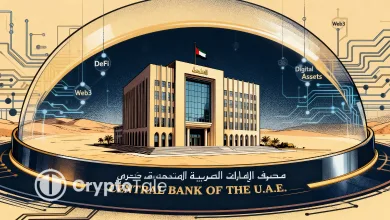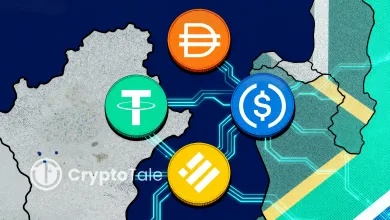KakaoBank Advances Plans for a KRW-Backed Stablecoin

- KakaoBank launches an active KRW stablecoin build with hiring and infrastructure planning.
- Kakao develops the KRW token while Naver explores wallets, setting up potential future rivalry.
- Regulators restrict issuance to banks as Korea backs sovereign-aligned payment control.
KakaoBank began active development of a KRW stablecoin. The move involves token preparation and infrastructure planning under Kakao Group leadership, with regulatory oversight. This supports sovereign-aligned payment rails, counters dollar dominance, and strengthens domestic digital finance control.
From Research Talks to Real Blockchain Construction
KakaoBank moved beyond research and started building a working system for its KRW stablecoin. According to local media, the company began hiring backend developers for its blockchain services. The roles require mastery of smart contracts, knowledge of token standards, and experience with full-node transaction management.
Notably, these job listings show structured preparation rather than conceptual exploration. Therefore, the bank now converts earlier strategy discussions into operational development programs. This shift follows comments by CFO Kwon Tae-hoon during the August H1 2025 earnings session.
Kwon Tae-hoon confirmed KakaoBank reviewed digital asset issuance and custody options for entry into digital finance. However, he stopped short of confirming product timelines or launch schedules. Therefore, the hiring process now provides concrete proof of execution.
Meanwhile, Kakao Group strengthened its setup through a united KRW stablecoin task force. The team coordinates bank, payments, and technology divisions on unified token standards. Consequently, these efforts indicate structured groundwork for compliant, fiat-backed token issuance.
Earlier in June, KakaoPay filed six trademark applications for KRW-linked stablecoin tickers. The filings included PKRW, KKRW, KRWP, KPKRW, KRWKP, and KRWK. These codes combine Kakao identity markers with the Korean won.
The filings support preparation for interoperability between banking and payment ecosystems. Additionally, such planning aligns with the broader development of the tokenized payment rail.
Competition Intensifies with Naver
However, Kakao does not operate alone within this emerging race. Naver reportedly prepared a stablecoin wallet tied to a Busan-based initiative. According to reports, the project involves Hashed and the Busan Digital Asset Exchange, BDAN.
Naver Financial also moved toward a merger with Dunamu, operator of Upbit. Upbit remains South Korea’s largest crypto exchange by volume and infrastructure. This move introduces significant competitive pressure in the digital payments space.
NaverPay serves around 30 million monthly users. KakaoPay reaches 42 million members, with 24 million monthly active users. Therefore, both firms command national-scale user engagement suitable for stablecoin adoption.
Related: Kaia Chair Challenges South Korea’s Bank-First Plan
From Control to Sovereign-Aligned Structure
This race began when President Lee Jae Myung prioritized KRW stablecoins as part of a national initiative. He aimed to limit reliance on U.S. dollar-based stablecoins in trade and business use. Therefore, the government pushed sovereign-aligned currency solutions.
However, regulatory progress remains slow. Several lawmakers proposed legal structures for stablecoin adoption, but there was no measurable progress. Meanwhile, the Bank of Korea restricted issuance rights to licensed banking institutions.
This stance led to resistance from fintech platforms seeking broader participation space. KakaoBank occupies a unique position as both a licensed bank and a technology-driven entity. Therefore, its role bridges financial regulation and innovation execution. Its activity aligns with Korea’s switch toward private bank-led token issuance.
KakaoBank’s strategy indicates coordinated planning rather than fragmented initiatives. The bank integrates stablecoin design with token securities deployment architecture. Therefore, the financial ecosystem moves toward structured digital asset integration.
The expanding sector now includes banks issuing regulated digital tokens alongside government oversight. This sets clearer patterns for domestic token usage. Cross-platform settlements and compliant payment networks now gain a formal structure. The stablecoin race is active and structured. KakaoBank, Naver, and regulators influence market foundations through defined policies.
KakaoBank’s early infrastructure development now defines its role in this phase. The bank is actively developing operational systems for KRW stablecoin use. Its framework now shows national, institutional, and regulatory coordination.
Meanwhile, KakaoBank’s KRW stablecoin build phase confirms active structural alignment with Korea’s broader tokenized finance strategy. The effort integrates hiring, legal groundwork, trademarks, and banking authorization into unified progress. Together with Naver’s entry and government priorities, the nation advances toward regulated, sovereign-aligned digital currency systems.





